I have a .txt file in which two set of data are in the same column but divided by some characters, here an example:
#First set of data
#Time #Velocity
1 0.3
2 0.5
3 0.8
4 1.3
#Second set of data
#Time #Velocity
1 0.7
2 0.9
3 1.8
4 2.3
So I would like to plot this two set of data as two different curves, and also I do not know how many lines has each set of data ( or at least this number can change ) so i cannot use every command.( I'm looking for some gnuplot command, not bash command). Thank you
